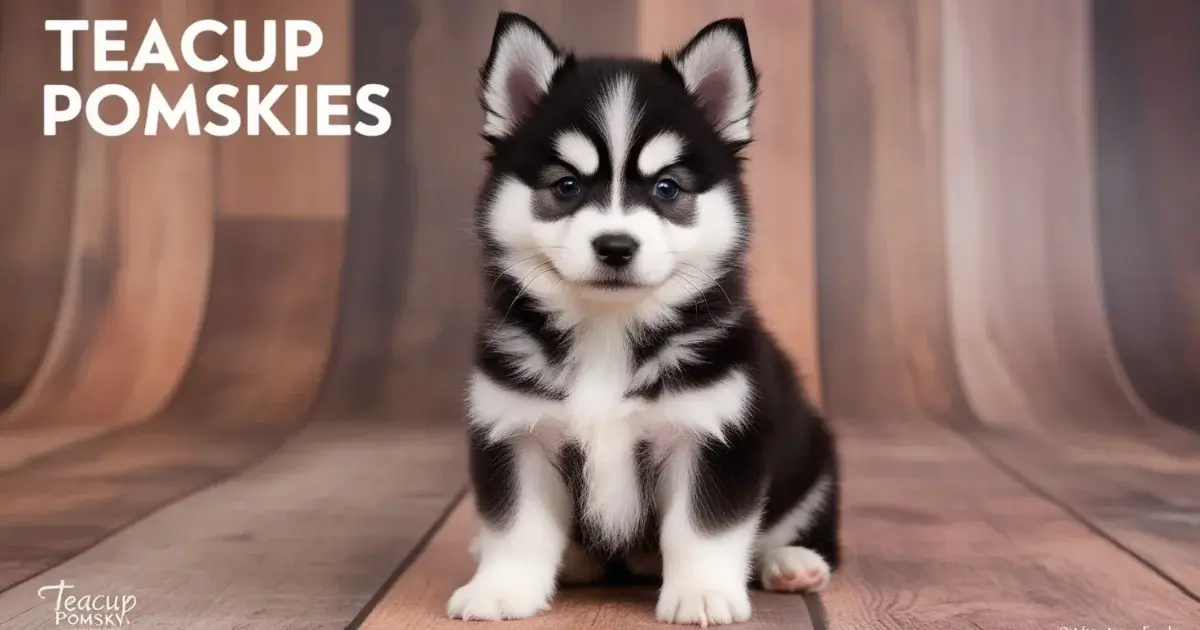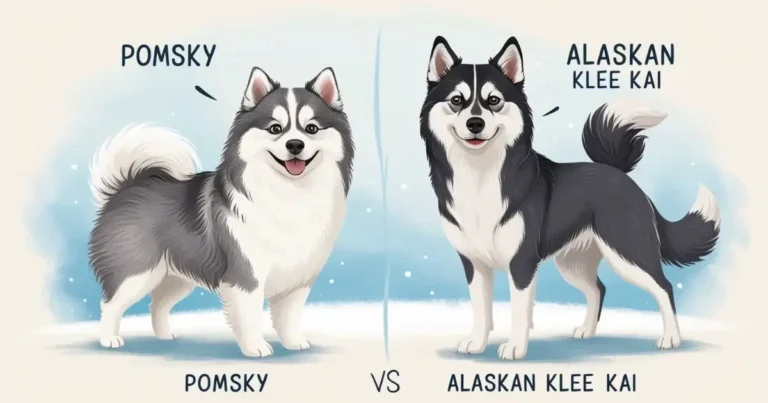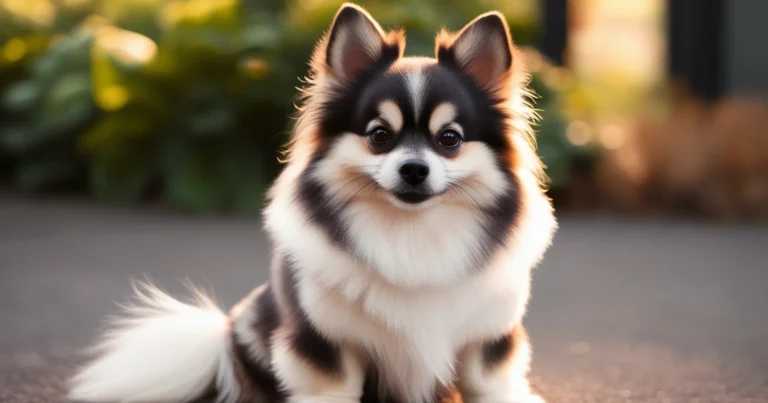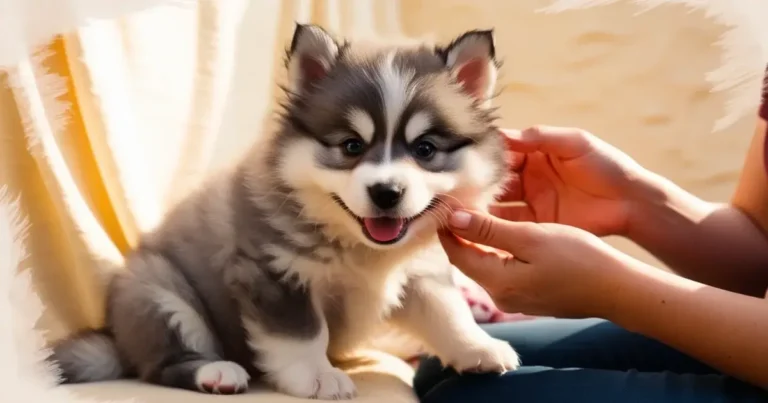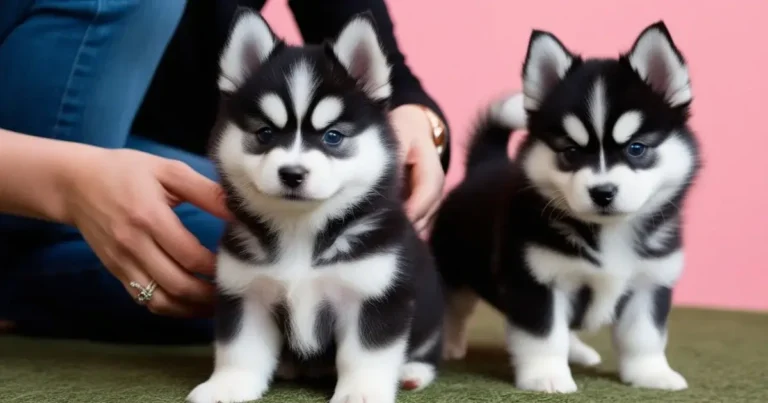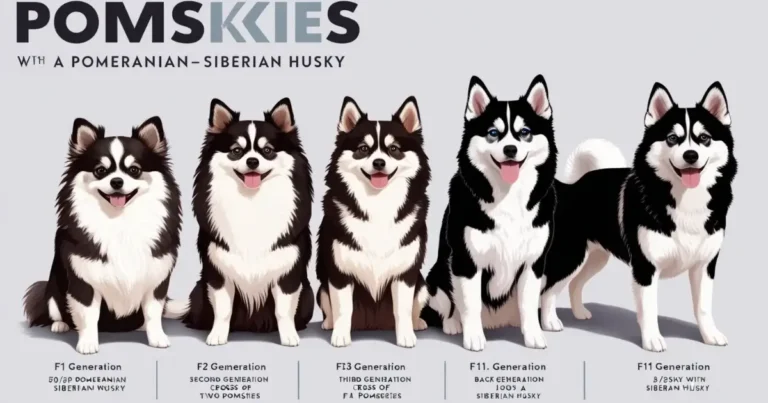Teacup Pomsky: Everything You’ll Love to Know Before Getting One
Teacup Pomskies are gaining popularity fast. People love their tiny size and adorable looks. However, before getting one, it’s essential to understand their unique traits and potential challenges. These dogs have special needs, and owning a Teacup Pomsky is different from owning a larger breed. In this guide, we’ll explore everything you should know about their size, health, and how they compare to standard Pomskies.
Table of Contents
What Is a Teacup Pomsky?
Teacup Pomskies are a miniature version of the Pomsky breed, which are a cross between a Pomeranian and a Siberian Husky. These dogs are also known as micro Pomskies or mini Pomskies.
- Appearance: They resemble tiny Huskies. Their fluffy coats and big eyes give them an irresistible charm. Often, they have blue eyes, adding to their striking appearance.
- Weight and Size: Teacup Pomskies usually weigh less than 10 pounds when fully grown. Their tiny Pomsky size makes them ideal for small spaces and easy to carry around.
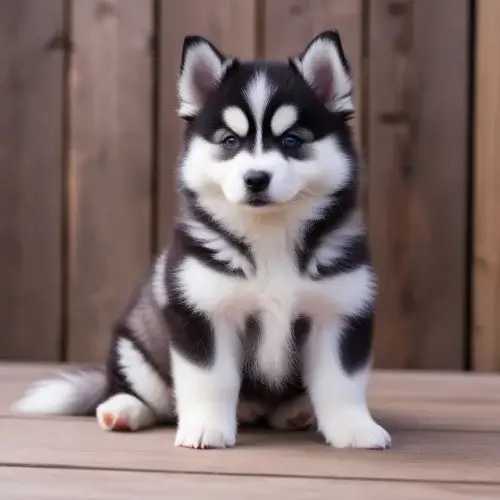
The Appeal of Teacup Pomskies
Why do so many people love Teacup Pomskies? Here’s why they are so appealing:
- Visual Appeal: They look like miniature Huskies. This combination of tiny size and cute features makes them highly attractive to dog lovers.
- Portability: Their smallest Pomsky size makes them easy to take anywhere. If you live in an apartment or a small home, a Teacup Pomskies could be a perfect fit.
- Companionship: Even though they are small, Teacup Pomskies are affectionate and loyal. They form strong bonds with their owners and are very smart, making them great companions.
The Hidden Risks of Teacup Pomskies
Owning a Teacup Pomskies are not without its risks. Here are some things to consider:
- Fragility: Due to their small size, Teacup Pomskies are fragile. They are more prone to injuries, even from small falls or rough handling.
- Health Issues: Because they are bred to be so small, Teacup Pomskies often face serious health problems. These include heart conditions, breathing difficulties, and fragile bones. It’s important to be prepared for these potential issues.
- Shorter Lifespan: While a standard Pomsky can live for up to 15 years, Teacup Pomskies generally have a shorter lifespan, often around 7 to 10 years.
- Unethical Breeding Practices: Unfortunately, many breeders prioritize size over health. This leads to dogs with genetic health problems. Always choose a reputable breeder to avoid supporting unethical practices.
Teacup Pomsky vs. Standard Pomsky
When comparing a Teacup Pomskies size vs standard, the differences are significant. Let’s break them down:
Size Comparison
Teacup Pomskies and standard Pomskies differ greatly in size.
| Pomsky Type | Weight | Size |
| Teacup Pomsky | Less than 10 pounds | Tiny and delicate |
| Standard Pomsky | 20-30 pounds | Medium-sized and sturdy |
Coat Types
Both Teacup Pomskies and standard Pomskies have thick, fluffy coats. However, Teacup Pomskies might need gentler grooming due to their delicate fur.
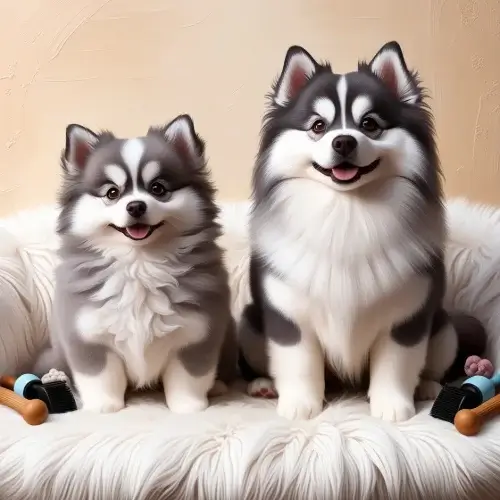
Health and Lifespan
- Teacup Pomskies have more health problems. They are prone to breathing difficulties and heart issues. Their lifespan is typically shorter, around 7-10 years.
- Standard Pomskies are generally healthier and can live up to 12-15 years.
Exercise and Space Requirements
Despite their tiny Pomsky size, Teacup Pomskies are still energetic dogs. They require daily exercise but need less space to run around. This makes them suitable for smaller homes or apartments.
How to Choose a Reputable Breeder
It’s important to choose a responsible breeder when buying a Teacup Pomskies. Here’s how to find the right one:
- Avoiding Backyard Breeders: Many breeders prioritise small size over health. These dogs often suffer from genetic health issues. Avoid breeders who don’t provide health clearances for the parent dogs.
- Ethical Breeding: A good breeder will follow ethical breeding practices. They should be transparent about the dog’s health and offer health screenings for both parent breeds.
Making an Informed Decision
Before deciding to get a Teacup Pomskies, consider the pros and cons carefully:
Pros:
- Perfect for small places
- Cute and portable
- Affectionate and Loyal
Cons:
- Prone to Health issues
- Fragile and delicate
- Shorter Lifespan
If you’re worried about the health risks, consider adopting a standard Pomsky. They are still small and cute but are healthier and less prone to genetic issues.
Conclusion
Teacup Pomskies are adorable and make great companions. However, they come with several risks, including health problems and a shorter lifespan. If you choose to get one, make sure you find a responsible breeder who prioritizes the health of the dog. Alternatively, consider adopting a standard Pomsky for a healthier and longer-lasting companion.
Call to action: Ready to bring a Pomsky into your life? Whether it’s a Teacup Pomsky or a standard one, always make a responsible choice and consider the dog’s health and happiness.
FAQs
What affects the growth of a Mini Pomsky?
Mini Pomsky growth is influenced by genetics, diet, and exercise. They are bred to be smaller, but maintaining a healthy diet and regular activity is essential for proper growth and development.
Does Tiny Pomsky size impact their lifespan?
Yes, Tiny Pomsky size can lead to a shorter lifespan due to potential health issues. Teacup-sized dogs often face challenges like fragile bones and heart problems, which can affect longevity.
What are the grooming needs for the smallest Pomsky size?
The smallest Pomsky size requires regular grooming due to their fluffy coat, similar to standard Pomskies. Frequent brushing helps reduce shedding and keeps their fur healthy.
Is there a difference in exercise needs between Teacup vs standard Pomsky?
Yes, Teacup Pomskies need less exercise than standard Pomskies due to their size, but they still require daily activity to maintain their energy levels and overall health.
